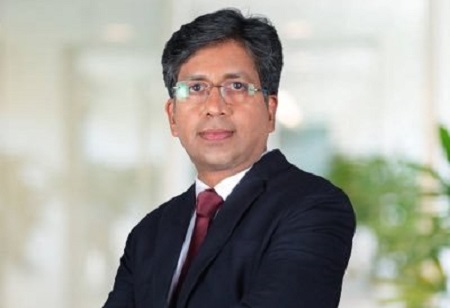
Sony Thayil, Business Head, P & L Role, National Head - Consumer Glass Division, Asahi India Glass Limited (AIS)</b>, in an interaction with Sudhakar Singh, Editor, Industry Outlook, shares his views on the glass industry. During the conversation, he throws light on the issues pertaining to recycling, increasing cost of raw materials and more.
Automotive and construction industries are witnessing a sharp rise in the demand for integrated glass and windows solutions. How do you see the current evolution of this market in India?
In the post-Covid era, both the residential and commercial construction domains are witnessing an increased traction. The residential domain in particular is reaching new heights with the demand for luxury as well as affordable properties soaring across all the major metro cities.
Moreover, as work-from-office model takes over, the demand for commercial properties are coming back to a full swing. The proactive measures taken by the Government of India as well as the rising FDIs in the industrial segment is keeping the real estate industry buoyant with an expected growth of 9 percent CAGR.
Disposal of glass products is an area of major concern. Although some amount of recycled glass is now commonly used in the glass industry, the majority is land-filled. There is a lack of economical technologies that can identify and eliminate non-glass materials. How can the industry improve the cost-effectiveness of the process of collecting & reusing post-consumer glass?
The major glass manufacturers of India are now conscious about the benefits of recycling and are putting in concentrated efforts to organize the recycling of glass products. That being said, glass recycling has not developed in entirety and is still in a nascent stage.
Today, all the manufacturers along with other industrial players of the nation are required to take united steps in order to see a sustainable change. We at Asahi India Glass Limited (AIS) are absorbing used glass to be applied in different parts of manufacturing.
With combined efforts of all, the glass industry of India is expected to transition towards a circular economy, optimizing the use of post-consumer glass.
One of the biggest challenges for glass industry is the increasing cost of raw materials. The prices of sand, soda ash, and limestone, which are the main raw materials used in the production of glass, have been rising in recent years. This has put pressure on glass manufacturers to increase their prices. How can the industry overcome this predicament?
Although the prices of the raw materials remained stable in between 2010 to 2018, it saw a continued surge in and after 2019, owing to multiple uncontrollable circumstances like logistical challenges, fuel crisis and more.
In order to counter the growing price of raw materials and also the end product, we as a responsible company advanced our manufacturing practices to increase the output and overall productivity of our plant. We also explored the potential of alternative energy sources in our operation to further bring down the overall operational cost.
In critical period of the pandemic, not only the glass industry but also the entire building materials segment revamped its manufacturing process to develop efficiency and pass the benefits to the customers.
What are the challenges in shifting from B2B manufacturing to operating on a B2C model? What are the challenges in the way?
Shifting to a B2C space is a natural evolution as it brings an organization nearer to its clients. However, the transition towards B2C model is a complicated and challenging process. Unlike pure manufacturing with limited touch points, in B2C model, organizations are required to develop effective logistics chains, understand the demand of the end-customers and inform them about the usability of different products.
At AIS, we have developed a 4G model, wherein we provide end-to-end service to our clients starting with undertaking a project to designing and finishing the task. This brings us closer to our customers and adds more credibility to our company.
The shift to B2C market has also brought up many opportunities in the adjacent market, like — glass windows, glass railing, shower cubicles, etc, while helping us stand apart from other competitors in the market.
Flat glass industry is also facing competition from alternative materials such as plastics and composites. These materials are often lighter and cheaper than glass, making them attractive alternatives for many applications. What is your take on this?
In my perspective, the Indian market has space for every material. Moreover, with usage of glass still being in a nascent stage, the scope for glass manufacturers in the nation is high when compared with other materials.
In the coming years, the usage of glass will go up, with its rising implementation both in terms of aesthetics and energy efficiency. Lastly, with growing education and acceptance amongst consumer, there is no foreseeable threat to the industry.
Where do you see this market in the near future? Which new technologies do you expect to be implemented?
A number of factors like green revolution in the building material market, rising FDI in the real estate industry and increasing GDP of India is positively influencing the growth of glass industry. In the future, the sector is expected evolve and touch new heights.
Although few challenges like interest rate breaches and inflation might deliver a blow to the industry. The positive factors will outweigh the negative ones to provide a healthy growth to the industry over the span of next eight to nine years.
In the coming days, the value added glass like the performance glass, energy efficient glass, etc will have more traction among the customers and will play a major role in satisfying the need for better product that solve the existing problems, helping the industry grow at a fast pace.
We use cookies to ensure you get the best experience on our website. Read more...